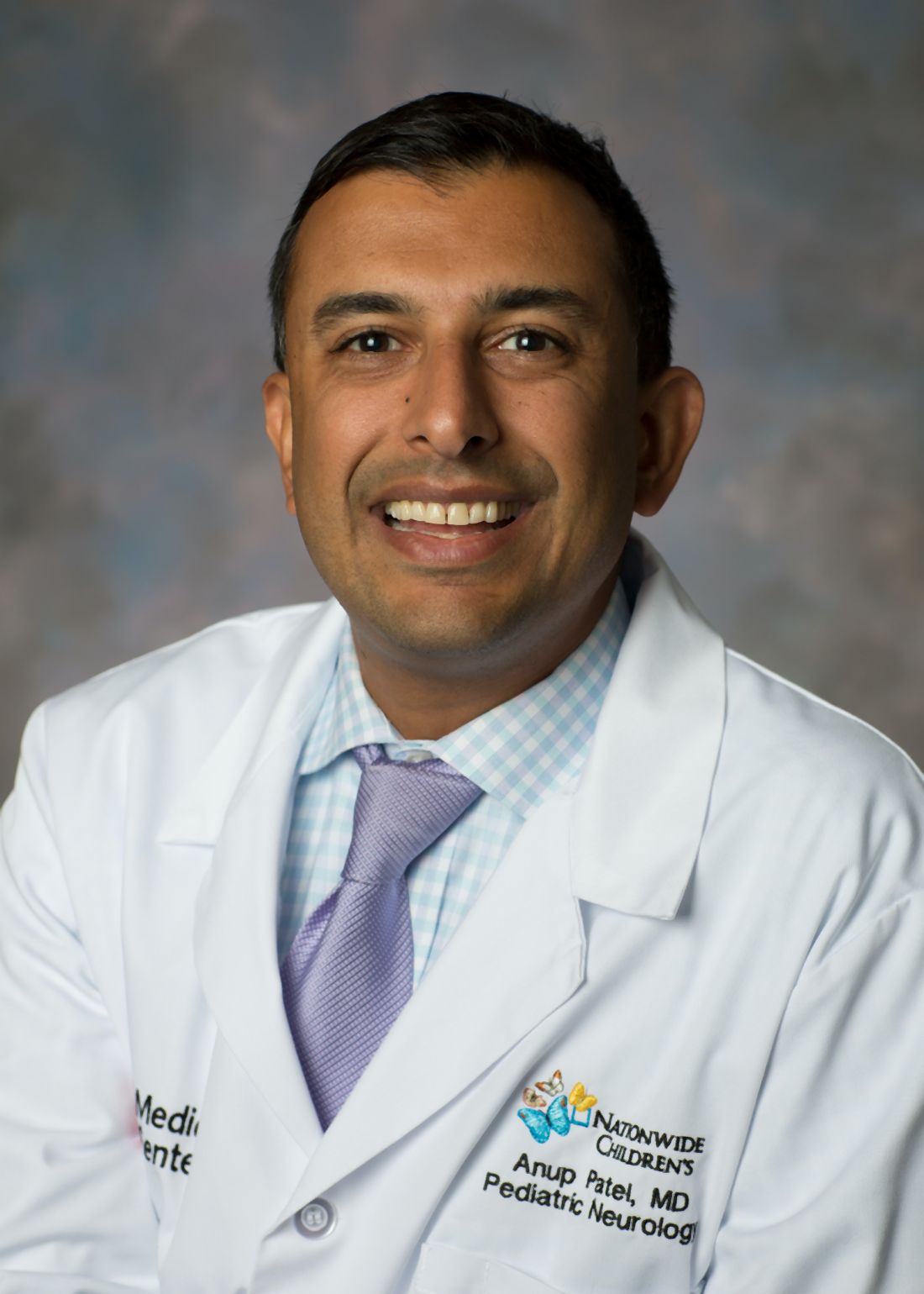User login
At the 2020 CNS-ICNA Conjoint Meeting, held virtually this year, Anul Patel, MD, section chief of Pediatric neurology at Nationwide Children’s and associate professor of clinical pediatrics and neurology at the Ohio State University, both in Columbus, Ohio, reported 156-week results of an open-label extension trial called GWPCARE5 that showed patients with LGS taking Epidiolex had a 60% or greater average reduction in seizures, compared with baseline. Epidiolex, a highly purified form of CBD, was approved by the Food and Drug Administration in 2018 for LGS and Dravet syndrome.
In a separate presentation, Nancy A. McNamara, MD, an assistant professor at the C.S. Mott Children’s Hospital at the University of Michigan, Ann Arbor, said that more than one-third of patients taking both Epidiolex and valproic acid (VPA) developed thrombocytopenia after starting CBD therapy. The single-center chart review she reported on included 83 patients.
Daniel Friedman, MD, an epilepsy specialist at New York University who’s researched CBD in children with autism spectrum disorder, said, “These studies show that, while purified CBD has durable effects on the most disabling seizures in children and adults with LGS, like all treatments, it is not without risks that warrant attention and monitoring.”
Open-label extension study
The open-label extension study included 366 patients who participated in the two previous clinical trials. They were given varying doses of CBD titrated over 2 weeks with 20 mg/kg as the target dose, Dr. Patel said. The most common concurrent therapies they were taking were clobazam, valproate or VPA, lamotrigine, levetiracetam, and rufinamide. At weeks 145-156, 67% of patients had a 50% or greater reduction in seizures, 44% had a 75% or greater reduction, and 9% stopped having seizures altogether, Dr. Patel said.
“CBD treatment had a similar safety profile to what was observed in the completed parent randomized clinical trials,” Dr. Patel said. “Sustained reductions in drop and total seizures were observed up to the 156-week follow-up point. So these results demonstrate the potential long-term benefits of CBD treatment for patients with LGS as it relates to reduction of their seizures.”
Adverse event profiles in this analysis were similar to previous clinical trials, he noted. The three most common adverse events were diarrhea (38%), convulsion (38%) and pyrexia (34%), but high percentages of those adverse events resolved during follow-up: 78%, 80%, and 96%, respectively.
Dr. Patel also noted that 31% of patients had elevated liver enzymes (alanine aminotransferase or aspartate aminotransferase), but most of these patients – 78 of 113, or 69% – were on concomitant VPA. “Importantly, no patient met the standard criteria for severe drug-induced liver injury, known as Hy’s law,” he said.
Retention rates for patients were 81% at 1 year, 69% at 2 years and 65% at 3 years, Dr. Patel said.
“An urgent systemic review”
Dr. McNamara’s research drilled down into the interaction of CBD and VPA. “Over the past several months we have made observations that several patients that had been started on CBD, also known as Epidiolex, had developed thrombocytopenia, some of which were symptomatic,” she said. Symptoms included hematuria, easy bruising, and gingival bleeding.
That prompted what Dr. McNamara called “an urgent systemic review” of all patients on CBD. Of 83 patients started on CBD for LGS from January to August 2019, 9 (11%) developed thrombocytopenia. “All of these patients were on concurrent VPA and no patients started on CBD without VPA developed thrombocytopenia,” she said. In all, 23 patients were taking CBD concurrently with VPA. Four of nine cases were symptomatic.
“The thrombocytopenia was reversible in all patients with reduction of medication and one patient recovered spontaneously without intervention,” Dr. McNamara noted.
“This was an important finding because this was not something that had come out of the clinical trials prior to FDA approval,” Dr. McNamara said. “This requires closer monitoring for patients who are started on CBD who are already on VPA.”
Of the 23 patients taking concurrent VPA, 10 had low platelet counts after starting CBD. In six patients, platelet counts dropped from normal before CBD therapy to low afterward.
The study used a McNemar test to determine if an observed adverse event occurred by chance or was related to starting a drug, which yielded a P value of .125, Dr. McNamara said. “While this did not achieve statistical significance, we suggest that prescribers closely monitor platelet levels after starting CBD, particularly when a patient is also on concurrent VPA,” she said.
Her group obtained a complete blood count at baseline and then at 1, 3, and 6 months after starting the patient on CBD, along with evaluation of alanine aminotransferase and aspartate aminotransferase. “We believe that this is helpful because most of the patients that develop low platelets did so within 3 months of starting cannabidiol,” Dr. McNamara said.
She acknowledged the limits of the single-center study. “Future research will need to be done with larger cohorts with standardized surveillance labs,” she said in an interview.
Dr. Patel disclosed financial relationships with GW Research and Greenwich Biosciences. Dr. McNamara has no relevant disclosures.
At the 2020 CNS-ICNA Conjoint Meeting, held virtually this year, Anul Patel, MD, section chief of Pediatric neurology at Nationwide Children’s and associate professor of clinical pediatrics and neurology at the Ohio State University, both in Columbus, Ohio, reported 156-week results of an open-label extension trial called GWPCARE5 that showed patients with LGS taking Epidiolex had a 60% or greater average reduction in seizures, compared with baseline. Epidiolex, a highly purified form of CBD, was approved by the Food and Drug Administration in 2018 for LGS and Dravet syndrome.
In a separate presentation, Nancy A. McNamara, MD, an assistant professor at the C.S. Mott Children’s Hospital at the University of Michigan, Ann Arbor, said that more than one-third of patients taking both Epidiolex and valproic acid (VPA) developed thrombocytopenia after starting CBD therapy. The single-center chart review she reported on included 83 patients.
Daniel Friedman, MD, an epilepsy specialist at New York University who’s researched CBD in children with autism spectrum disorder, said, “These studies show that, while purified CBD has durable effects on the most disabling seizures in children and adults with LGS, like all treatments, it is not without risks that warrant attention and monitoring.”
Open-label extension study
The open-label extension study included 366 patients who participated in the two previous clinical trials. They were given varying doses of CBD titrated over 2 weeks with 20 mg/kg as the target dose, Dr. Patel said. The most common concurrent therapies they were taking were clobazam, valproate or VPA, lamotrigine, levetiracetam, and rufinamide. At weeks 145-156, 67% of patients had a 50% or greater reduction in seizures, 44% had a 75% or greater reduction, and 9% stopped having seizures altogether, Dr. Patel said.
“CBD treatment had a similar safety profile to what was observed in the completed parent randomized clinical trials,” Dr. Patel said. “Sustained reductions in drop and total seizures were observed up to the 156-week follow-up point. So these results demonstrate the potential long-term benefits of CBD treatment for patients with LGS as it relates to reduction of their seizures.”
Adverse event profiles in this analysis were similar to previous clinical trials, he noted. The three most common adverse events were diarrhea (38%), convulsion (38%) and pyrexia (34%), but high percentages of those adverse events resolved during follow-up: 78%, 80%, and 96%, respectively.
Dr. Patel also noted that 31% of patients had elevated liver enzymes (alanine aminotransferase or aspartate aminotransferase), but most of these patients – 78 of 113, or 69% – were on concomitant VPA. “Importantly, no patient met the standard criteria for severe drug-induced liver injury, known as Hy’s law,” he said.
Retention rates for patients were 81% at 1 year, 69% at 2 years and 65% at 3 years, Dr. Patel said.
“An urgent systemic review”
Dr. McNamara’s research drilled down into the interaction of CBD and VPA. “Over the past several months we have made observations that several patients that had been started on CBD, also known as Epidiolex, had developed thrombocytopenia, some of which were symptomatic,” she said. Symptoms included hematuria, easy bruising, and gingival bleeding.
That prompted what Dr. McNamara called “an urgent systemic review” of all patients on CBD. Of 83 patients started on CBD for LGS from January to August 2019, 9 (11%) developed thrombocytopenia. “All of these patients were on concurrent VPA and no patients started on CBD without VPA developed thrombocytopenia,” she said. In all, 23 patients were taking CBD concurrently with VPA. Four of nine cases were symptomatic.
“The thrombocytopenia was reversible in all patients with reduction of medication and one patient recovered spontaneously without intervention,” Dr. McNamara noted.
“This was an important finding because this was not something that had come out of the clinical trials prior to FDA approval,” Dr. McNamara said. “This requires closer monitoring for patients who are started on CBD who are already on VPA.”
Of the 23 patients taking concurrent VPA, 10 had low platelet counts after starting CBD. In six patients, platelet counts dropped from normal before CBD therapy to low afterward.
The study used a McNemar test to determine if an observed adverse event occurred by chance or was related to starting a drug, which yielded a P value of .125, Dr. McNamara said. “While this did not achieve statistical significance, we suggest that prescribers closely monitor platelet levels after starting CBD, particularly when a patient is also on concurrent VPA,” she said.
Her group obtained a complete blood count at baseline and then at 1, 3, and 6 months after starting the patient on CBD, along with evaluation of alanine aminotransferase and aspartate aminotransferase. “We believe that this is helpful because most of the patients that develop low platelets did so within 3 months of starting cannabidiol,” Dr. McNamara said.
She acknowledged the limits of the single-center study. “Future research will need to be done with larger cohorts with standardized surveillance labs,” she said in an interview.
Dr. Patel disclosed financial relationships with GW Research and Greenwich Biosciences. Dr. McNamara has no relevant disclosures.
At the 2020 CNS-ICNA Conjoint Meeting, held virtually this year, Anul Patel, MD, section chief of Pediatric neurology at Nationwide Children’s and associate professor of clinical pediatrics and neurology at the Ohio State University, both in Columbus, Ohio, reported 156-week results of an open-label extension trial called GWPCARE5 that showed patients with LGS taking Epidiolex had a 60% or greater average reduction in seizures, compared with baseline. Epidiolex, a highly purified form of CBD, was approved by the Food and Drug Administration in 2018 for LGS and Dravet syndrome.
In a separate presentation, Nancy A. McNamara, MD, an assistant professor at the C.S. Mott Children’s Hospital at the University of Michigan, Ann Arbor, said that more than one-third of patients taking both Epidiolex and valproic acid (VPA) developed thrombocytopenia after starting CBD therapy. The single-center chart review she reported on included 83 patients.
Daniel Friedman, MD, an epilepsy specialist at New York University who’s researched CBD in children with autism spectrum disorder, said, “These studies show that, while purified CBD has durable effects on the most disabling seizures in children and adults with LGS, like all treatments, it is not without risks that warrant attention and monitoring.”
Open-label extension study
The open-label extension study included 366 patients who participated in the two previous clinical trials. They were given varying doses of CBD titrated over 2 weeks with 20 mg/kg as the target dose, Dr. Patel said. The most common concurrent therapies they were taking were clobazam, valproate or VPA, lamotrigine, levetiracetam, and rufinamide. At weeks 145-156, 67% of patients had a 50% or greater reduction in seizures, 44% had a 75% or greater reduction, and 9% stopped having seizures altogether, Dr. Patel said.
“CBD treatment had a similar safety profile to what was observed in the completed parent randomized clinical trials,” Dr. Patel said. “Sustained reductions in drop and total seizures were observed up to the 156-week follow-up point. So these results demonstrate the potential long-term benefits of CBD treatment for patients with LGS as it relates to reduction of their seizures.”
Adverse event profiles in this analysis were similar to previous clinical trials, he noted. The three most common adverse events were diarrhea (38%), convulsion (38%) and pyrexia (34%), but high percentages of those adverse events resolved during follow-up: 78%, 80%, and 96%, respectively.
Dr. Patel also noted that 31% of patients had elevated liver enzymes (alanine aminotransferase or aspartate aminotransferase), but most of these patients – 78 of 113, or 69% – were on concomitant VPA. “Importantly, no patient met the standard criteria for severe drug-induced liver injury, known as Hy’s law,” he said.
Retention rates for patients were 81% at 1 year, 69% at 2 years and 65% at 3 years, Dr. Patel said.
“An urgent systemic review”
Dr. McNamara’s research drilled down into the interaction of CBD and VPA. “Over the past several months we have made observations that several patients that had been started on CBD, also known as Epidiolex, had developed thrombocytopenia, some of which were symptomatic,” she said. Symptoms included hematuria, easy bruising, and gingival bleeding.
That prompted what Dr. McNamara called “an urgent systemic review” of all patients on CBD. Of 83 patients started on CBD for LGS from January to August 2019, 9 (11%) developed thrombocytopenia. “All of these patients were on concurrent VPA and no patients started on CBD without VPA developed thrombocytopenia,” she said. In all, 23 patients were taking CBD concurrently with VPA. Four of nine cases were symptomatic.
“The thrombocytopenia was reversible in all patients with reduction of medication and one patient recovered spontaneously without intervention,” Dr. McNamara noted.
“This was an important finding because this was not something that had come out of the clinical trials prior to FDA approval,” Dr. McNamara said. “This requires closer monitoring for patients who are started on CBD who are already on VPA.”
Of the 23 patients taking concurrent VPA, 10 had low platelet counts after starting CBD. In six patients, platelet counts dropped from normal before CBD therapy to low afterward.
The study used a McNemar test to determine if an observed adverse event occurred by chance or was related to starting a drug, which yielded a P value of .125, Dr. McNamara said. “While this did not achieve statistical significance, we suggest that prescribers closely monitor platelet levels after starting CBD, particularly when a patient is also on concurrent VPA,” she said.
Her group obtained a complete blood count at baseline and then at 1, 3, and 6 months after starting the patient on CBD, along with evaluation of alanine aminotransferase and aspartate aminotransferase. “We believe that this is helpful because most of the patients that develop low platelets did so within 3 months of starting cannabidiol,” Dr. McNamara said.
She acknowledged the limits of the single-center study. “Future research will need to be done with larger cohorts with standardized surveillance labs,” she said in an interview.
Dr. Patel disclosed financial relationships with GW Research and Greenwich Biosciences. Dr. McNamara has no relevant disclosures.
FROM CNS-ICNA 2020


